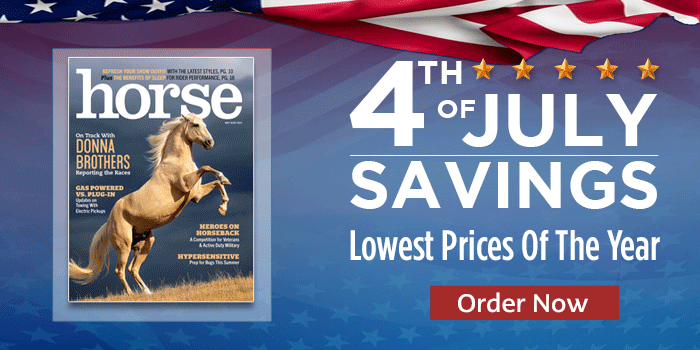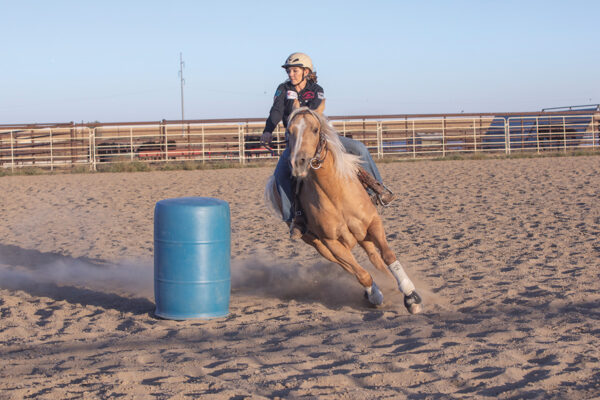
If you know the barrel racing pattern and your horse is tuned into your cues and is willingly guided around each turn, you can begin to add some speed.
Here, trainer Kelly Kennedy Joseph shares her tips to improve your barrel-pattern time. After watching many riders and races, she knows where most riders can improve: at the turn. While many riders think they’ll make up speed by pushing their horses to gallop faster in between barrels, it’s the turn itself that will help you speed up your time.
Kelly says it’s important to line up your horse correctly and have square shoulders and great body position to start the turn. However, if you want to add speed, your cues and your horse’s strength matter most at the backside of the barrel. It’s your horse’s hindquarter strength that will push him and help him gain speed quickly, according to Kelly. Her No. 1 tip to increase speed is to make sure that your horse is strong and can move out of the turns quickly.
Horses that are speedy when galloping straight from barrel to barrel may be beat by a horse that can maintain speed throughout the course.
“You have to leave the barrel strong,” says Kelly. “Get your horse out of the turn and move with all the strength he can. If you have a horse that’s fast on the turns, you’ll make up time, even if your horse isn’t the fastest sprinter.”
The Ideal Turn
What does a fast but controlled turn look like? Your entrance to the barrel will help to get your horse in position. Make sure to keep your shoulders square and your reins up to allow your horse to have free shoulder movement. If you lean forward, you’ll put pressure down on your horse’s shoulders and cause him to work harder as he turns.
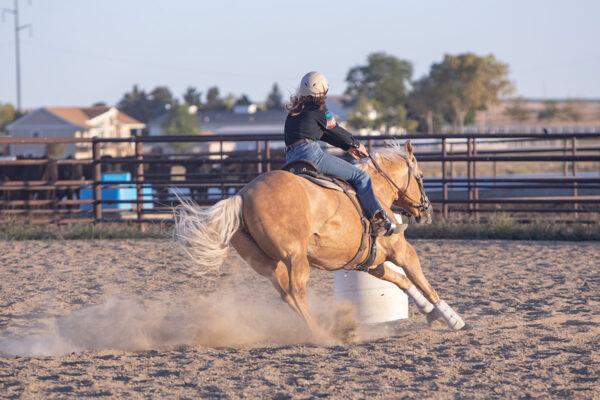
As he moves around the barrel, keep your inside shoulder up to help him balance. When you feel that he is halfway around the barrel, it’s time to add speed. Use your hip and leg cues to move your horse forward into your reins as you reach forward and urge him on. Adding a kissing sound or verbal cue just as your horse is ready to reach forward with his back legs will prompt him to add speed.
Hindquarter Strength for Barrel Racing Speed
Make your horse’s hind end strong by working on a move from a different sport. Reining rollbacks will help your horse learn to turn quickly and get his hindquarters engaged.
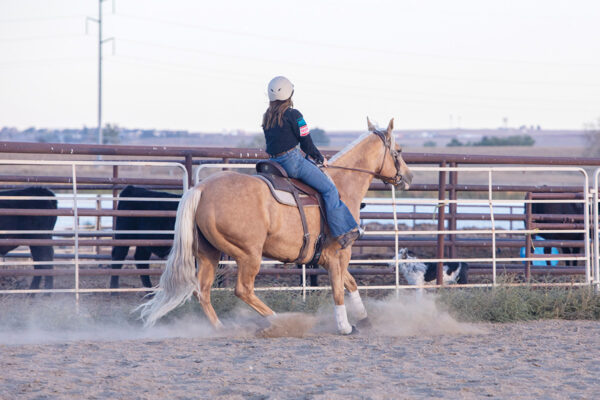
To work on this drill, trot or lope down a long fence line. Cue your horse to stop on his haunches by saying “whoa,” rolling your pockets down into the saddle and picking up on the reins. Immediately after your horse stops, pick up your reins and point them back to the direction you just came from and give your horse a verbal cue to move out. Kiss or smooch at this moment and your horse will learn to associate turning and moving out with speed. Your horse will stay engaged with his hindquarters and start the turn to travel down the fence once more. Choose different places along the fence line to stop and turn so your horse doesn’t anticipate the cue and pays attention to your aids.
Kelly says this exercise will build your horse’s hindquarter muscles and prepare him to push out of his barrel turns. If you make sure to kiss at just the right moment as you go around the barrel, you’ll remind your horse of this exercise and help him move out with power and speed.
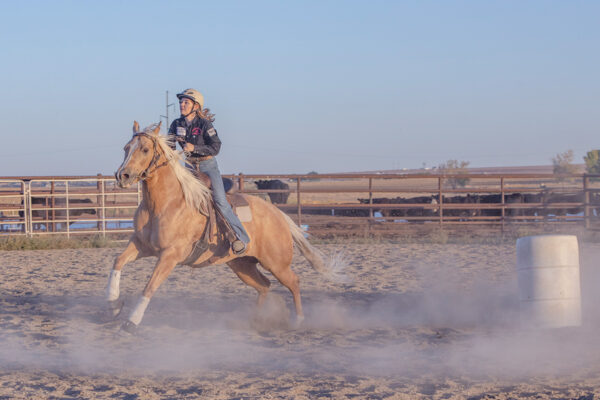
Free Time
Kelly says she also encourages her riders to work their horses out in the open, away from the arena. If you have a safe place to ride freely—and trust your horse to slow on command—galloping in the open can help him learn to move out freely.
“I want my students to go ride in the pastures, to let their horses run and be horses,” Kelly says. “Riding out in the pastures, you help the horse learn to run hard, but you also have to have the control to slow him down when you want.”
Kelly says you’ll advance as a rider when you learn what you can do to cue your horse to respond the best. Learn what your horse responds to and how you can adjust to the horse. You may need to use your hips to cue; some horses may need more leg. If you give a cue that’s too aggressive, you may get speed you’re not ready for. If you ride a horse that needs more pressure, learn if you need to build his strength or just cue in a different way.
“The best riders complement their horse and reassure him that he’s doing the right thing,” Kelly says. “That’s the connection I want to see.”
Meet the Barrel Racing Trainer
Kelly Kennedy Joseph has been active in barrel racing since she qualified for Little Britches Rodeos. She now coaches riders from her Berthoud, Colo., facility and races at the professional level nationwide.
Thanks to Rose Applegate for modeling the barrel exercise. Helmet courtesy of Troxel.
This article about more speed in your barrel racing pattern appeared in the November/December 2022 issue of Young Rider magazine. Click here to subscribe!

